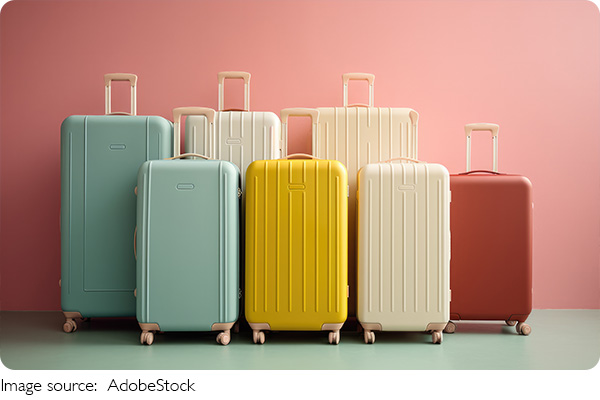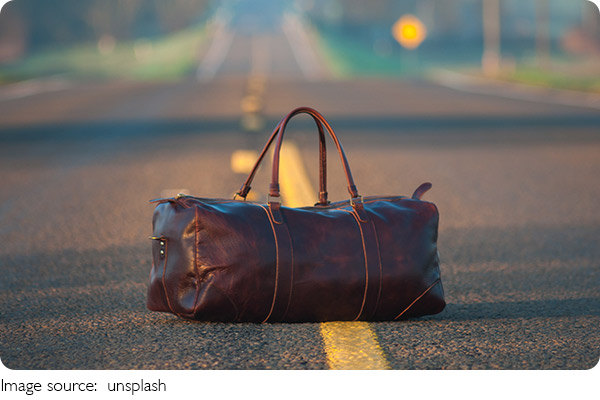Luggage Rules Explained

Lykkers, how many of us have been unsure about what we can bring on the plane—especially when deciding between hand-carry and checked luggage? If you've ever had to repack at the airport counter, you're not alone.
Let's walk through the key differences between hand-carry and checked luggage, and talk about what we can and can't pack to avoid surprises when we fly.
What's hand-carry luggage?
Hand-carry (or cabin) luggage is what we bring into the plane with us. It usually includes a small suitcase or backpack that fits in the overhead bin or under the seat in front of us.
Most airlines allow one cabin bag and one personal item like a laptop bag or handbag. Sizes and weights vary, so we always double-check the airline's rules before flying.
What's checked luggage?
Checked luggage is the bigger suitcase we hand over at the counter before boarding. It goes into the cargo hold of the plane and is picked up at baggage claim after landing.
This type of luggage has more generous weight limits (usually 20–30kg), and we can pack more items, but we can't access it during the flight.
What's not allowed in hand-carry bags?
There are strict rules for items in our cabin bags. Here's what we avoid putting in our hand-carry luggage:
• Liquids over 100ml: This includes drinks, lotions, gels, and even toothpaste. All must fit in a 1-liter transparent zip bag.
• Sharp objects: No scissors, metal nail files, or anything with pointed ends.
• Sporting equipment or tools: Things like bats, sticks, or screwdrivers are a no-go.
• Lighters and flammable sprays: These are often restricted or allowed only in very specific ways.
If unsure, we always check with the airline's website before packing.
What's not allowed in checked bags?
Checked luggage gives us more freedom, but it also has rules:
• Power banks and lithium batteries: These must be in our hand-carry, not in checked luggage.
• Valuables or fragile electronics: We keep these in hand-carry for safety.
• E-cigarettes or vaping devices: These usually need to be carried with us in the cabin.
• Aerosols or pressurized containers: These must follow volume and type restrictions.
Also, some countries ban fresh foods, seeds, or certain medications—so we double-check destination rules too.
Tips to avoid problems
Here are a few easy habits we follow to make packing stress-free:
• Use packing cubes to organize clothing and toiletries.
• Keep a measuring tape at home to check luggage dimensions.
• Print or screenshot airline baggage rules before packing.
• Pack must-have items (medication, chargers, ID) in our hand-carry.
And remember, if we're ever unsure about an item, it's better to ask ahead than risk delays at the airport.

Ready for your next trip?
Lykkers, travel can be exciting—but packing mistakes can cause real headaches. Now that we know the difference between hand-carry and checked luggage, plus the do's and don'ts, we're already one step ahead.
Have you ever been stopped at security for something in your bag? Or do you have a personal packing trick that always works? Share it with us—we're all learning together, one trip at a time!
-
 Cartagena: Magic by the SeaWhat happens when elegance meets energy? Cartagena stuns with passion, color, and sun-kissed Caribbean joy.
Cartagena: Magic by the SeaWhat happens when elegance meets energy? Cartagena stuns with passion, color, and sun-kissed Caribbean joy. -
 Nahanni Nature EscapePlan Your Ultimate Nahanni National Park Trip: Exact Costs, Transport Options, Best Seasons & Insider Tips!
Nahanni Nature EscapePlan Your Ultimate Nahanni National Park Trip: Exact Costs, Transport Options, Best Seasons & Insider Tips! -
 Chios: Greece's Quiet StarSkip the crowds—Chios whispers history, hidden beaches, and soul-soothing beauty. Could this be Greece's best-kept secret?
Chios: Greece's Quiet StarSkip the crowds—Chios whispers history, hidden beaches, and soul-soothing beauty. Could this be Greece's best-kept secret?